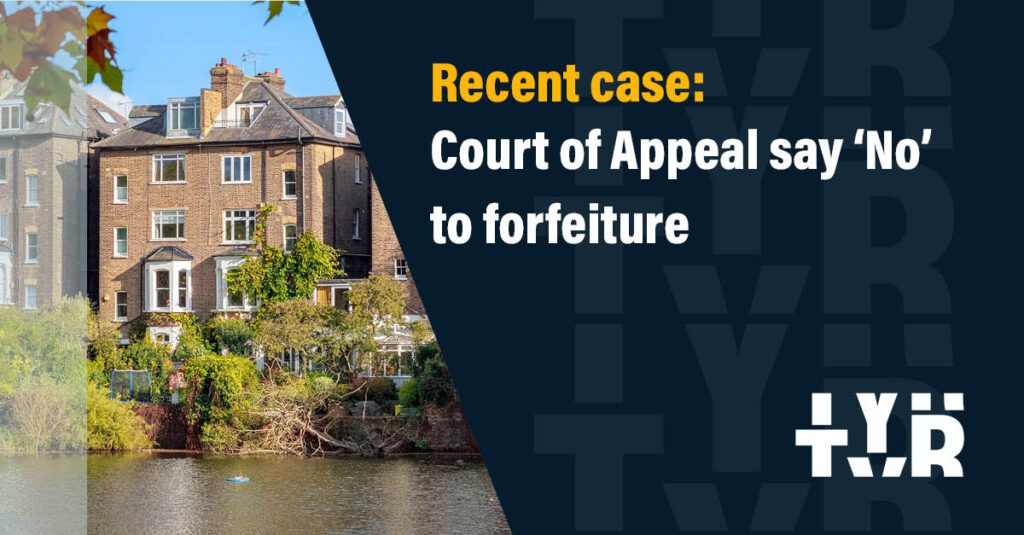
The recent case of White v 29 Buckland Crescent Management Co Ltd [2025] EWCA Civ 814 confirms the limits to enforceability options following settlement of a lease dispute. The Court of Appeal ruled that a landlord cannot pursue forfeiture if that remedy was not explicitly preserved in the settlement agreement.
Forfeiture of a lease is a legal process which grants a landlord the option to terminate a lease and reclaim possession of the property due to a breach of the lease terms by the tenant. This right usually arises from a specific clause in the lease agreement that allows forfeiture in the event of a breach, such as non-payment of rent or other covenant violations.
Background
29 Buckland Crescent Management Co Ltd (“Buckland”) was the freeholder of a building in North West London (the “Building”) which was split into four flats. Mr White (“White”) was the leasehold owner of the top floor flat in the Building (the “Flat”). In accordance with the lease, White was obliged to maintain the internal parts of his flat in “good and substantial” repair and Buckland was granted an option to re-enter the Flat, and forfeit (terminate) the lease, upon a breach of covenant by White. Buckland claimed White was in breach of his obligations due to repeated water leaks from the Flat into other parts of the Building.
A court claim was issued by Buckland against White to determine the following:
- Whether White had breached the lease; and
- Whether the option of forfeiture had arisen for Buckland against White.
Prior to the matter reaching trial, the parties reached a settlement which was documented by way of a settlement agreement (the “Agreement”). The Agreement set out the following:
- White admitted the breach of the lease;
- White agreed to make payments to Buckland as compensation;
- White agreed to complete specific remedial works by a specified date (the “Works”); and
- All claims, whether existing or potential future claims, were resolved and allowed both parties to enforce the terms of the Agreement.
White failed to complete the Works. As a result, Buckland served a section 146 notice (pursuant to the Law of Property Act 1925) on White and issued forfeiture proceedings.
White challenged Buckland’s approach on the basis that Buckland’s right to forfeit the lease had been extinguished by the settlement as the failure to complete the Works on time was part of the original dispute.
Judgment
Initially, the County Court agreed with White however, this decision was reversed by the High Court, holding that forfeiture was a means of enforcing the Agreement. There was then an appeal to the Court of Appeal in which the Court of Appeal disagreed with the High Court decision.
The Court of Appeal held that forfeiture was a remedy of a breach of the lease, not the Agreement. Since settlement was intended to resolve all claims relating to the original dispute, and did not expressly preserve the right to forfeit as a method of enforcement, Buckland could not rely on the original breach to enable forfeiture. The only rights retained under the Agreement were those necessary to enforce the terms of the Agreement itself, such as claiming damages or specific performance, not to revive remedies tied to the original breach.
Points to note
The Court of Appeal made it clear in this case that forfeiture is a remedy linked to lease terms and not a remedy for a party’s breach of a settlement agreement.
This case highlights the importance of ensuring settlement terms are drafted clearly and unambiguously. If parties wish to preserve specific rights, such as forfeiture, such preservations must be explicitly set out in the settlement agreement.
Contact details
eleanor.tordoff@tyrlaw.co.uk +44(0)7908 190547 +44(0)113 322 8240



